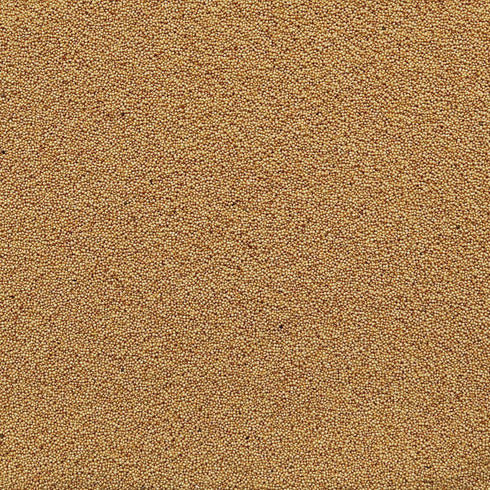- About Us
- FAQ
- Contact Us
- Track and manage my orders
- Wishlist
- 0Cart
- Order securely online, contact us by phone at 1-833-663-6637 or send us an Email

ORGANIC AMARANTH
SKU: G100-1
Hurry up! Sales Ends In
Origin: India
Production: Whole seed
Amaranth is often referred to as a "pseudo-cereal" (just like buckwheat, quinoa, and chia) because it is technically not a grain but a seed, yet similar to true cereals in flavor, cooking, and nutritional profile. Cherished already by the Aztecs 8,000 years ago, the amaranth plant is still cultivated throughout the world as an important source of nutrition (leaves, stalks, roots, and seeds are all edible). It is not only easy to grow and harvest (one plant can produce up to 60,000 seeds) but also easy to prepare and digest.
Qualities: this tiny grain is not only gluten-free but also packed with nutrition. It ranks higher in minerals, such as manganese, calcium, iron, phosphorous, potassium, and carotenoids, than most vegetables, and is the only grain with documented vitamin C content. It is considered a "complete protein" as it contains all nine essential amino acids and a high in insoluble fiber (78%).
Common use: since amaranth cooks up very dense, it is often combined with other grains such as rice or millet or other pseudo-cereals such as quinoa or buckwheat and enjoyed as a base for many sweet or savory dishes. To cook, rinse first and then bring 3-4 parts water to 1 part amaranth (or grain mixture) to a boil, add amaranth (or grain mixture), stirring frequently, and simmer 10-20 minutes or until at desired texture.
Amaranth can also be used as an exceptional thickener for sauces, soups, stews, and even jelly. Eaten as a snack, amaranth can have a light, nutty, or peppery-crunchy texture and flavor, and is sometimes even found enrobed in chocolate in puffed form.
Storage: keeps well in a sealed container in a cool, dry, and dark location
Disclaimer: this information is for educational purposes only and has not been evaluated by the FDA or CFIA. It is not intended to diagnose, treat, cure, or prevent any disease. This product has been packaged in the same facility as peanuts, tree nuts, wheat, soy, and other potential allergens. Even though this product has been grown, cleaned and packaged with the utmost care, please be aware that impurities may occur.
- Reviews
- Questions
Thank you for submitting a review!
Your input is very much appreciated. Share it with your friends so they can enjoy it too!
Amaranth
Extremely good product. We eat it every day. Im growing a large crop this year but needed some until it harvests

Important Crop. Great Quality.
Amaranth was an integral part of the diet in what are today called "the americas" before the modern era. The plant is native to these lands and grows in harmony with the local ecosystem. Monocrop farmers deemed it pigweed and target it with broadleaf herbicides. Seems like a terrible use of resources when "pigweed" has an excellent amino acid profile and is easy enough to incorporate into a diet. I suppose in the 1800s it would have been a bit more difficult to mechanize the harvesting and processing of such a small seed, but with modern tech, that isn't a concern.Eat more amaranth!!! My family loves to pop it on the stove, like teeny tiny popcorn. We then use the puffed amaranth in a "bar" which we make by mixing it with peanut butter, some honey or maple syrup, dried fruits, and maybe some other stuff we have lying around. Don't forget to sprinkle the pan with flakey salt!
Amaranth
love this grain. Couldn't find it in supermarkets once covid set in. I love it for breakfast with milk and honey and crushed nuts. Thank you
